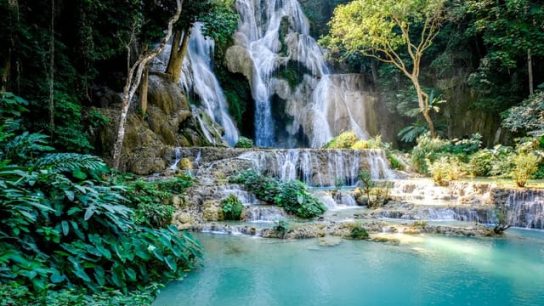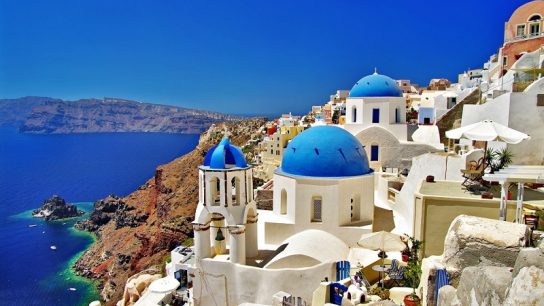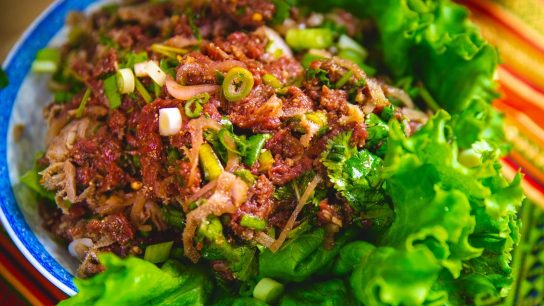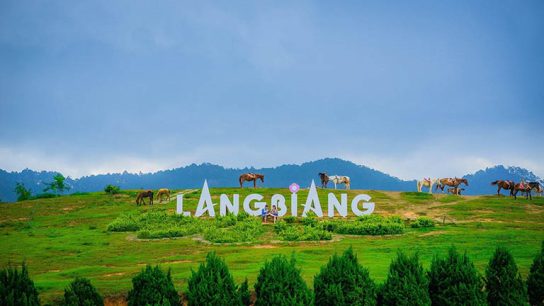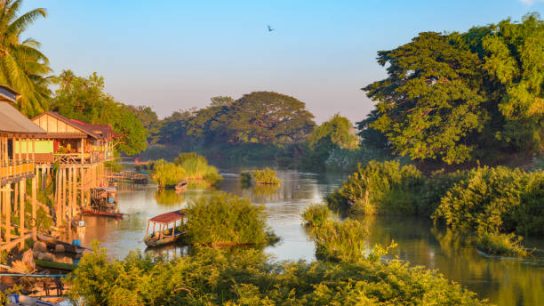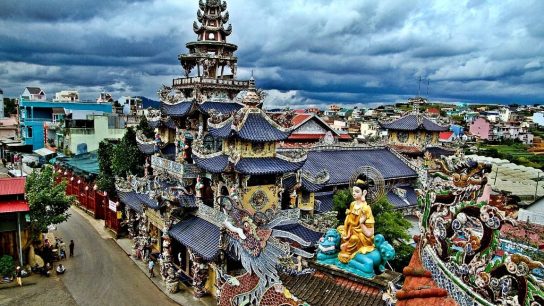The Muong Hoa Valley near Sapa is a breathtaking destination nestled amidst the mountains of Northwestern Vietnam. Famous for its picturesque terraced rice fields, ancient rock formations, and serene streams, it offers an enchanting escape into nature’s embrace. Visitors can explore the valley’s stunning landscapes, immerse themselves in the rich cultural heritage of local ethnic minorities, and embark on unforgettable adventures.
Where Is Muong Hoa Valley?

Muong Hoa Valley is located in Hau Thao commune, approximately 10 kilometers southeast of Sapa town in northern Vietnam. It is nestled amidst the stunning landscapes of the region, surrounded by mountains and lush greenery.
The valley is primarily inhabited by ethnic minority groups such as the Red Dao, Giay, and H’Mong, adding to its cultural richness and charm.
When Is The Best Time To Visit Muong Hoa Valley?
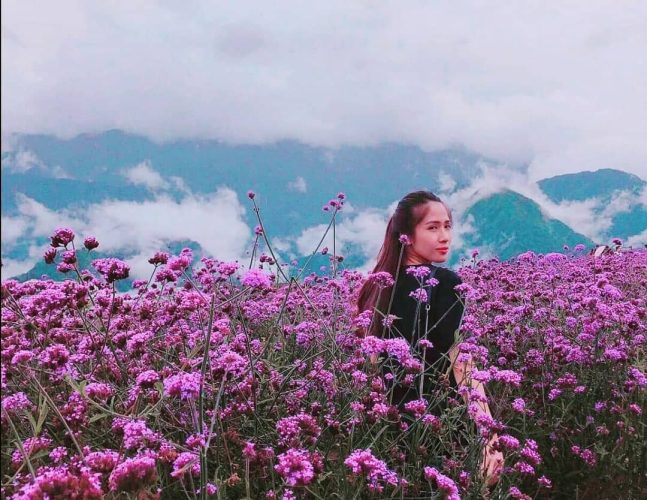
The best time to visit Muong Hoa Valley is during the autumn season, typically from September to November. During this time, the valley is adorned with the golden hues of ripe rice fields, creating a breathtakingly beautiful landscape. The weather is generally pleasant with mild temperatures, making it ideal for exploring the valley and enjoying outdoor activities.
Additionally, autumn is a popular time for photography enthusiasts as the stunning scenery provides ample opportunities for capturing memorable moments.
How to get to Muong Hoa Valley?
To reach Muong Hoa Valley, travelers usually start from the town center of Sapa, a popular tourist destination in northern Vietnam. From Sapa, there are several transportation options available.
- One common method is to hire a motorbike or car and drive to the valley. The journey typically takes around 30 minutes to 1 hour, depending on road conditions and traffic. The route involves passing through scenic mountain roads, offering picturesque views along the way. However, it’s important to note that some roads may be narrow and winding, so drivers should exercise caution.
- Another option is to join a guided tour or hire a local guide. Many tour operators in Sapa offer guided trekking or hiking tours to Muong Hoa Valley, providing transportation and assistance throughout the journey. These tours often include visits to ethnic minority villages and cultural sites along the route, enhancing the overall experience.
- For those seeking a more adventurous approach, hiking or trekking to Muong Hoa Valley is also possible. Several trekking trails lead from Sapa to the valley, ranging from easy to challenging routes. Travelers can choose to explore the valley on foot, immersing themselves in the stunning natural beauty and cultural richness of the region.
What to see in Muong Hoa Valley
Terraced Rice Fields:
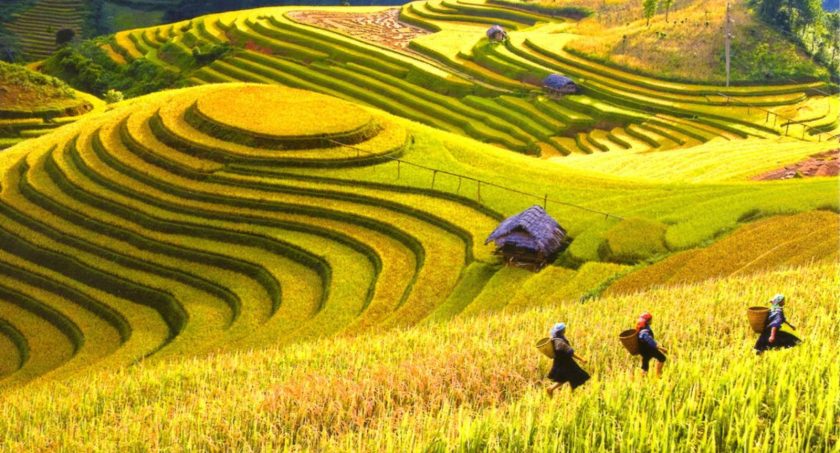
Undoubtedly the most iconic feature of Muong Hoa Valley is its breathtaking terraced rice fields, which cascade down the mountainsides like giant steps. Carved into the rugged terrain by generations of local farmers from the H’mong, Dao, and Giay ethnic minorities, these terraces create a mesmerizing patchwork of vibrant green during the growing season.
The best time to witness the beauty of the terraced fields is from May to October when the rice is lush and green or during the harvest season in September and October when the fields turn golden yellow. Visitors can take leisurely walks along the narrow paths that wind through the terraces, providing ample opportunities for photography and immersion in the tranquil rural scenery.
Ancient Rock Carvings:

Scattered throughout Muong Hoa Valley are ancient rock carvings that offer intriguing glimpses into the region’s prehistoric past. Dating back thousands of years, these enigmatic petroglyphs depict various scenes of daily life, religious rituals, and mythical creatures, providing valuable insights into the beliefs and customs of the valley’s early inhabitants. One of the most significant rock carving sites is located near the village of Ta Van, where visitors can marvel at the intricate designs etched into the stone surfaces.
Waterfalls and Streams:
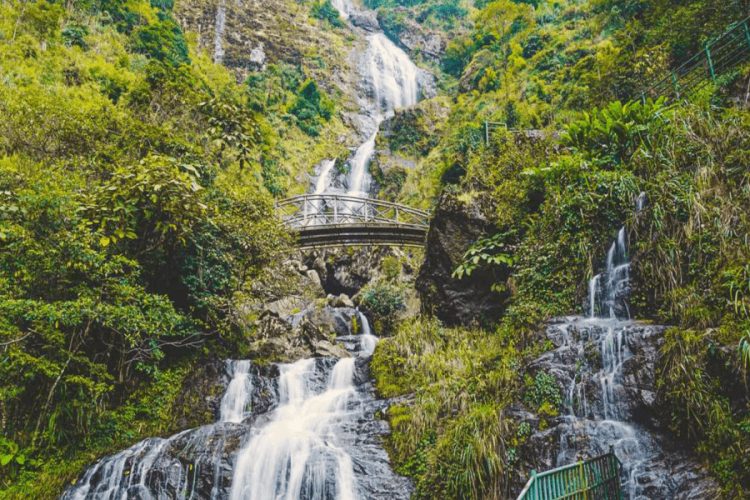
Muong Hoa Valley is also home to several scenic waterfalls and crystal-clear streams that add to the area’s natural beauty. One of the most popular waterfalls is Thac Bac, also known as Silver Waterfall, which cascades gracefully down the mountainside amidst lush vegetation.
Nearby, visitors can explore the serene surroundings of Love Waterfall, named for its romantic legend involving a fairy and a young man from the Dao ethnic group. Additionally, the gentle streams that meander through the valley provide excellent spots for picnicking, cooling off on hot days, or simply enjoying the peaceful ambiance of nature.
Ethnic Minority Villages:

Muong Hoa Valley is inhabited by various ethnic minority communities, each with its own distinct culture, traditions, and way of life. Visitors have the opportunity to visit these villages and interact with locals, gaining insights into their customs, crafts, and daily activities.
The villages of Lao Chai and Ta Van are particularly popular destinations, where travelers can experience homestays with local families, sample traditional cuisine, and participate in cultural exchanges such as dance performances and handicraft demonstrations.
Cultural Festivals and Events:

Throughout the year, Muong Hoa Valley comes alive with vibrant cultural festivals and events celebrating the traditions and heritage of its ethnic communities.
From the Tet holiday festivities of the Vietnamese Kinh people to the New Year celebrations of the H’mong, Dao, and Giay ethnic groups, visitors can immerse themselves in colorful parades, traditional music and dance performances, and festive markets selling local handicrafts and delicacies.
What to eat in Muong Hoa Valley Vietnam?
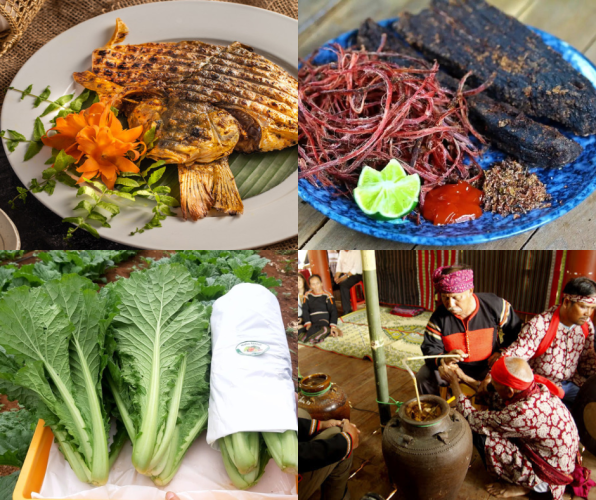
- Grilled Fish:
Freshwater fish sourced from the streams and rivers of Muong Hoa Valley are often grilled over open flames, imparting a smoky flavor to the tender flesh. The fish are typically seasoned with aromatic herbs and spices before being cooked to perfection.
- Thit Trâu Gác Bếp (Buffalo Cooked on a Stove):
Buffalo meat is a staple ingredient in many traditional dishes of the ethnic minority communities in Muong Hoa Valley. “Thit trâu gác bếp” is a hearty and flavorful dish where buffalo meat is marinated with a blend of spices and herbs, then slow-cooked over a wood-fired stove until tender and succulent. The result is a rich and aromatic dish that pairs well with steamed rice or sticky rice.
- Cat’s Ear Greens:
Cải mèo, also known as cat’s ear greens, is a type of wild vegetable commonly found growing in the mountainous regions of northern Vietnam. These tender greens are harvested from the fields and forests surrounding Muong Hoa Valley and are often stir-fried with garlic, ginger, and chili peppers to create a simple yet flavorful side dish.
- Bamboo Shoot Soup:
Bamboo shoots are a seasonal delicacy in Muong Hoa Valley, harvested from the lush bamboo forests that blanket the surrounding hillsides. Bamboo shoot soup is a comforting and nourishing dish made with tender bamboo shoots simmered in a flavorful broth seasoned with herbs and spices.
- Thắng Cố (Blood Pudding Soup):
Thắng cố is a traditional dish of the H’mong ethnic minority in Muong Hoa Valley, made from coagulated pig’s blood mixed with various herbs and spices. The blood mixture is then sliced into bite-sized pieces and simmered in a fragrant broth until cooked through. Thắng cố is prized for its rich flavor and hearty texture, and is often enjoyed as a warming and nourishing dish during the colder months
- Local Rice Wine:
No visit to Muong Hoa Valley would be complete without sampling some of the local rice wine, known as ruou can. This traditional Vietnamese liquor is made by fermenting glutinous rice with yeast and water, then distilling the mixture to produce a clear, potent spirit. Ruou can is often enjoyed during festive occasions and social gatherings, where it is shared among friends and family as a symbol of hospitality and goodwill.
If you have the opportunity to visit Sapa, a trip to Muong Hoa is simply a must. Its breathtaking landscapes, rich cultural heritage, and delicious cuisine offer an unforgettable experience for travelers seeking to immerse themselves in the beauty of northern Vietnam.
Sao Beach Phu Quoc: A Must-Visit Destination This Summer
Cannon Fort Cat Ba Island: An Detailed Guide Historical relics in Hai Phong

